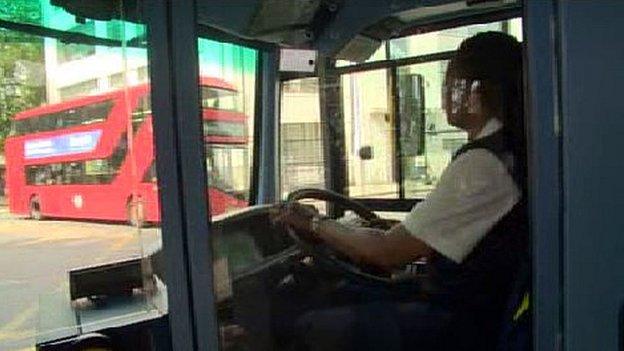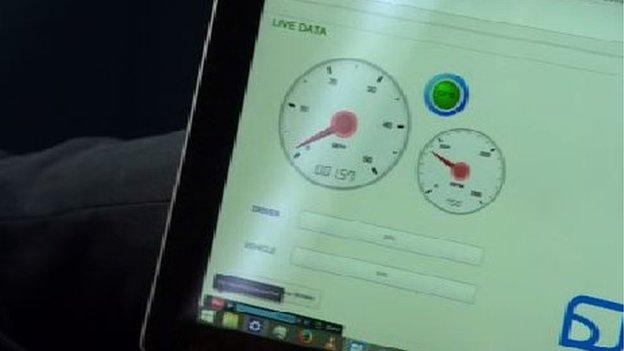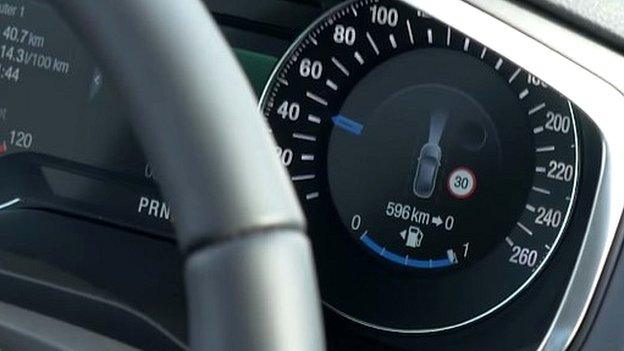London buses to test automatic speed-limiting technology
- Published

London Assembly Members have been calling for speed limit testing on buses since 2005
New technology that can limit the top speed of buses on different roads will be tested on two routes in the capital in a bid to increase road safety.
The Intelligent Speed Application (ISA) uses GPS technology installed on buses.
It tracks the vehicles' positions on a digital map, external showing the speed limit for the roads they are travelling on and restricts their engines accordingly.
More than 1,800 people have been killed or badly hurt by London buses over a five-year period.
Road hazards
Transport for London (TfL) said ISA would come into force on 47 London buses from next month.
It said the system would allow drivers to focus on potential road hazards rather than having to constantly check their speedometers, and has been welcomed by pedestrian campaigners.
TfL tested a different form of ISA vehicle speed-limiting technology on a London bus in 2009, external but decided not to go ahead with it because the system could be overridden. In the latest trial the speed limiter is connected directly to the engine and is automatic.

The maximum speed of the bus is capped at the speed limit on the road according to the digital map of London
Between 2008 and 2013 a total of 1,859 people were killed or seriously injured by London buses, which represents a continuing downward trend in the number of casualties in recent years, TfL said.
The trials, which are due to begin in July, will take place on the number 19 route from Battersea to Finsbury Park and the number 486 route, which runs from North Greenwich to Bexleyheath.
TfL said it tested the ISA technology on cars in 2010 and 2011 and it was now in a position to test it on buses.
- Published25 March 2015
